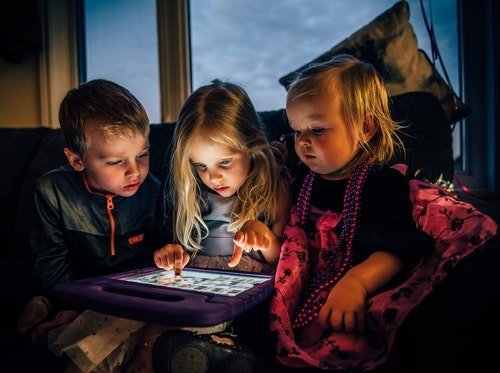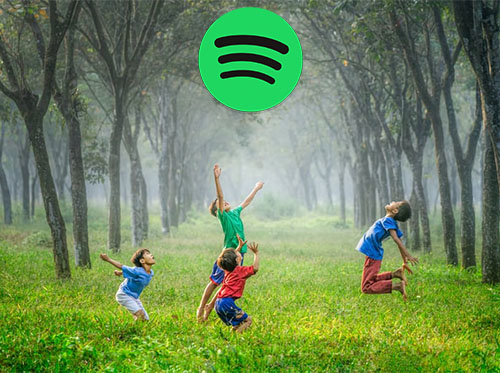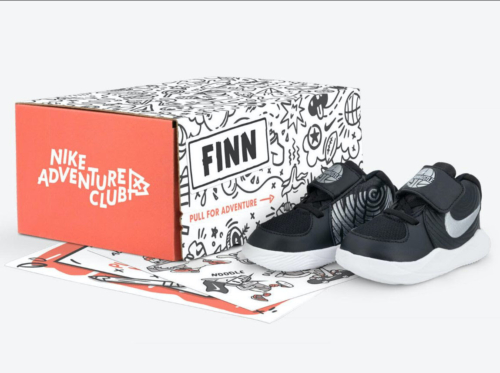Kids Screen Time: Crossing the Chasm and New Revenue Models
EPISODE NOTES
Mattel Films is partnering with MGM to put Polly Pocket on the silver screen. Hasbro and Epic Games are creating a line of Victory Royale toys for Fornite fans. And Kidfluencers are driving over $1 billion in toy sales. The kids market activity is being driven by (1) the explosion in kids screen time and (2) that kids digital viewership overtook linear for the first time in 2020. We highlight the key deals, consumption and regulatory trends, and the evolution of kids business models from subscriptions and FAST streaming apps to digital goods and social commerce.
Subscribe to our newsletter. We explore the intersection of media, technology, and commerce: sign-up link
Learn more about our market research and executive advisory: RockWater website
Email us: rounduppod@wearerockwater.com
You can listen, subscribe, and follow our show on:
Our ask: wherever you listen, and particularly on Apple Podcasts, please give us a rating and write a short review. And forward this email to a friend. Doing so will help others discover the RockWater Roundup.
EPISODE TRANSCRIPT:
Chris Erwin:
So Andrew, have been noticing that media entertainment companies are rapidly investing in building out of kids-focused content verticals as of late.
Andrew Cohen:
Yeah. We wrote a report about it a few months ago. Because as we track deals in a space, it seems like every week, every month we kept seeing new big announcements around kids content.
Chris Erwin:
And I think in that report, which came out April 1st, it’s on our blog if I remember correctly, that we tracked over 20 major investments, deals and partnerships around digital kids content over the past couple of years. That same deal activity, that trend has continued, if not accelerated. And we’re seeing also a particular ramp up in content initiatives by toy manufacturers. So, some of those deals that we referenced in the report, we talked about the launch of new subscription apps for kids. So we saw launches by the New York Times, Amazon, Times, Spotify, Apple, and more. We also saw an increase in ad-based kids content models. So 2B Kids, Roku Kids, and even a cool partnership between NFL and Nickelodeon, creating a unique kids experience for a linear TV and digital stream of NFL game.
Chris Erwin:
Also, the growth of derivative commerce and partnerships. So like Nastya, a massive global kidfluencer, she did a deal with Will Smith-owned Westbrook Studios. We saw OK Play raise 11 million. And HOMER, another digital app, raise 50 million from Lego, Sesame Workshop and Gymboree. And then even since then the highlights have continued. Back in April, Hasbro and Epic Games came together to create a new line of product, a Victory Royale toys for Fortnite fans. Then in May, MGA Entertainment is moving its L.O.L. Surprise! unboxing brand under more screens and a new film that’s going to land on Netflix in October. And then less than a couple of weeks ago, Mattel Films partnered with MGM to develop a new Polly Pocket feature film. So we’re seeing all this activity, there’s a lot more here than what I’ve just gone over, but Andrew, why is this happening?
Andrew Cohen:
So I think it’s two main things. One is that visual content consumption among kids is growing at unprecedented rates. So publishers and platforms see an opportunity here to bolster longterm fan loyalty by capturing this first truly digital, first native generation. And two, new regulation is arising that complicates how this viewership is monetized. So starting with the first one, young kids are spending more time today on digital platforms than ever before. Today’s generation children is the first to grow up spending more time on visual platforms than on traditional media. And in 2020 to 2021, as this entire generation has been forced to stay home and adopt e-learning, this paradigm shift has only intensified. And 2020 really represented an inflection point in this transition from linear to digital consumption.
Andrew Cohen:
So really these are not the screens that their parents grew up on, or that we grew up on. Growing up watching Nickelodeon, cartoon networks. In 2020, for the first time children younger than eight we’re watching more videos online than on live TV, or even on streaming services. Online videos accounted for nearly 75% of all screen time for young kids. And in the U.S., kids ages four to 15 spent on average 85 minutes per day watching YouTube and 80 minutes a day watching TikTok.
Chris Erwin:
Just to be clear, Andrew, so that’s 165 minutes total between both platforms, right?
Andrew Cohen:
Yeah, it’s crazy. I mean, I don’t know how much time I used to spend watching cable as a kid, but seeing those numbers for TikTok and YouTube is really eye-opening. It’s the availability of mobile devices and of the internet, I think has been the most significant factor for why kids are spending increasingly more and more time consuming online content. In 2020, 97% of young children live in homes with at least one smartphone, which represents a 54% growth since 2013. So as a result, 170,000 kids go online for the first time every day. And as of 2018, 40% of new internet users globally were children. So when the COVID lockdown started in March, screen-time instantly shot up around 50%. And now over a year later, that percentage still hasn’t budged. But Chris, as digital consumption is ramping up, so is the legislation that regulates how we monetize it.
Chris Erwin:
And it’s funny, just I think late last week I was talking to an advisor on privacy regulation and COPPA requirements. And yeah, overall there’s growing government regulation and parental concerns around kids’ screen time, which makes a monetization of this audience particularly challenging. And with regulation it creates uncertainty. And as we know, investors and operators don’t like conducting business where they don’t know what the rules are and how it’s going to evolve. But yeah, of note, there’s also increasing scrutiny by Congress and the government overall about consumer data collection and protections. And as we saw over the past month, there was big new legislation that was just recently proposed. But particularly on children, there’s the Children’s Online Privacy Protection Act. It’s also known as COPPA. A lot of people talk about this, but don’t know exactly what it is, so let’s quickly explain it.
Chris Erwin:
COPPA requires operators of commercial websites, online services and mobile apps to notify parents and obtain their consent before collecting any personal information on children under the age of 13. The aim of this is they give parents more control over what info is collected from their children online. And this is enforced by the FTC. So yeah, there some violations here over the past couple years that were pretty big. So in 2019, right? Google and YouTube were forced to pay record $170 million fine for violating this law. That same year, TikTok also paid a $5.7 million fine. Over the past couple of months, as Instagram has worked to launch their new kids platform, they’ve increasingly become under scrutiny, I think from the government and different watch groups as well.
Chris Erwin:
So speaking to the point of uncertainty and what’s changing here, California passed legislation protecting kids up to the age of 16, right? So extending this by three years. And there’s now new laws, even at the national level, to extend COPPA to kids up to 16 as well. That is material for all the different brands and marketers and publishers that target audiences in that age range. Overall, as the laws designed to protect kids who are consuming content online are developing and expanding, it’s estimated that by the end of 2021 800 million kids will be protected by digital privacy laws, as opposed to only 130 million just in 2018.
Chris Erwin:
So, that’s probably around a four X increase in just the past few years. So what’s the main takeaway? Regulation is not going to stop viewership, but it does create uncertainty around monetization. So, companies need to create kid-safe environments that they control. So this is the emergence of new business models that are direct-to-consumer with subscriptions, dedicated apps and digital experiences, new ad based models, and then derivative commerce, right? Monetizing through alternative products like physical and digital goods. So Andrew, let’s expand on that.
Andrew Cohen:
Yeah. So you just mentioned subscriptions, and we’re seeing that kids content is really a secret weapon to bolster LTV, its lifetime value for subscription services, which is kind of the golden metric for them. And when you think about it that way, it’s no wonder that everyone from Netflix, Disney+, Apple TV+, Paramount+, HBO Max, Spotify, New York Times, Amazon, Time Magazine, the works, everyone who you named up top and more, are investing so much in building out their kids vertical across subscription platforms.
Andrew Cohen:
The role of kids in the streaming wars is particularly interesting. It’s an effective tool to onboard two generations of subscribers with parents and kids, thus boosting customer acquisition, and also allows them to develop sticky habits that reduce churn, boosting customer retention. So kids content not only drives customer acquisition for subscription services by promoting signups among parents, there’s also an opportunity to kind of skate to where the puck is going by providing an early stage on-ramp to younger audiences who are now going to grow up with these platforms and develop meaningful user relationships. And as these younger audiences begin building habits on these platforms at an early age, they’re only going to come more and more valuable to these platforms over time. So that’s the subscription model. But as you mentioned, Chris, with COPPA, it’s making ad-based models a bit tricky. So you want to talk about that?
Chris Erwin:
So even though with all the new regulation and watch group scrutiny, the ad-based business models around kids content is trickier. Companies are still going to navigate it because it’s still a huge, big market and it’s growing quickly. So, let’s talk about some stats here. 61% of parents say they are more attentive when watching TV with their kids than when they’re watching alone. How does that translate into potentially buying more products?
Chris Erwin:
Well, parents are 250% more likely to buy products that they see advertised while watching with their kids. And then, parents spend 59% more than non-parents across categories. So, when there’s co-consumption between parent and child of content, parents are leaning in, they’re engaged more, they’re more likely to buy products, they’re more likely to spend than their non-parent counterparts in across all those categories. That’s very powerful. It’s thus no wonder that the kids digital advertising market is projected to grow by over 20% between 2018 and 2021, culminating in 1.7 billion by the end of this year, which is projected to make up around 37% of the total kids advertising spend. So I think there’s a third new revenue line here to also consider, Andrew, which is derivative commerce. Tell us about that.
Andrew Cohen:
Yeah. So, kids IP franchises are the most viable path to the diversified revenue flywheel that all content brands are striving for regardless, kids and not kids. And this is really best epitomized by Disney model flywheel that we’ve seen. I think it’s really interesting to note that 13 of the 16 highest grossing media franchises are from kids’ IP. And the vast majority of revenue generated by these franchises comes from merchandise. So really the kids’ audience, I think, is the most prime to spend on consumer products around the content and the characters that they love. Traditionally, we’ve seen this with Blockbuster, franchises on the big screen from Disney, but now we’re starting to see it with kind of small screen visual influencers as well, led by Ryan’s World and pocket.watch.
Chris Erwin:
And this is an example, Andrew, that everyone loves to talk about, but let’s dive into the specific data here. So this is probably the leading example of the kids digital content flywheel. So pocket.watch’s digital content portfolio has 7.4 billion video views each month, powers a massive consumer products division of over a hundred licensees across multiple categories.
Chris Erwin:
So Ryan’s World in particular, over 29 million YouTube subs, generating over a million hours of video views each day. Their total retail empire has surpassed over $500 million in revenue. And they’re selling consumer products everywhere from Walmart to Amazon, to FAO and more. In 2020 alone, Ryan’s World CP generated more than 250 million in sales. Now I think from our research, Ryan and his family takes home around 30 million in revenue across their whole business. And for the first time last year, I think they saw around 60 to 70% of that 30 million come from their consumer products division. That’s the first time it has outpaced their YouTube ad revenues, a very big new trend for that family and also for kidfluencers overall. And then also another big note, Ryan’s World launched their own virtual world on Roblox last year, where fans can purchase gems that can be exchanged for virtual goods and more. And then we’re going to see a lot more of these virtual activations by kidfluencers going forward. And Andrew, I think there’s some other detail you have there.
Andrew Cohen:
Definitely. I think when you look at where kids are spending time and money, you have to talk about gaming, and specifically the metaverse. The top metaverse platforms each command one to one and a half billion hours of playtime per month. So it’s no wonder why not only Ryan’s World, but also toy companies like Lego, Hasbro, Mattel are all activating these virtual spaces. And not only is that where they’re spending their time, like I said, it’s where they’re spending their money. Sometimes on physical products, but oftentimes on virtual products and in-app purchases. So 82% of free children’s apps, those made for kids five to 12, offer in-app purchases. In 2020, in-app purchases generated 31 billion in revenue. A prime example of this is Kim Kardashian, whose kids friendly, free-to-play mobile game generated $200 million per year, mostly through these in-app purchases. So it’s definitely… I think probably the next great frontier of kids content and commerce.
Chris Erwin:
So Andrew, I think we are really at the end of our time. So I think the takeaway here is that content is driving these massive new revenue streams across overall kids entertainment and kids experiences. There’s a lot more activity to track here. We’ll have to get to it in a future roundup. So I’ll just have to say Andrew, till next time.
Andrew Cohen:
Next time. See you then.
—
Ping us here at anytime. We love to hear from our readers.



